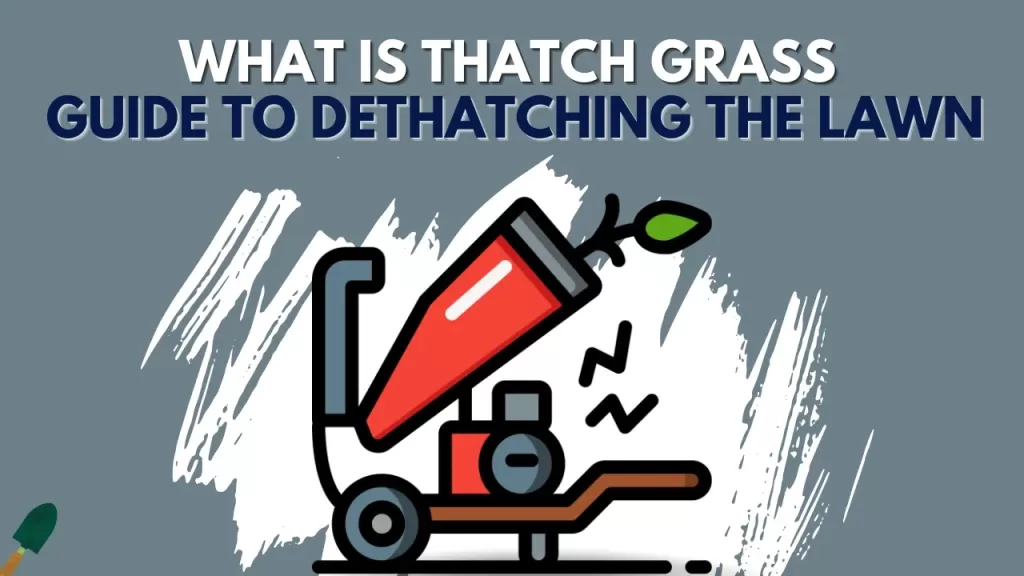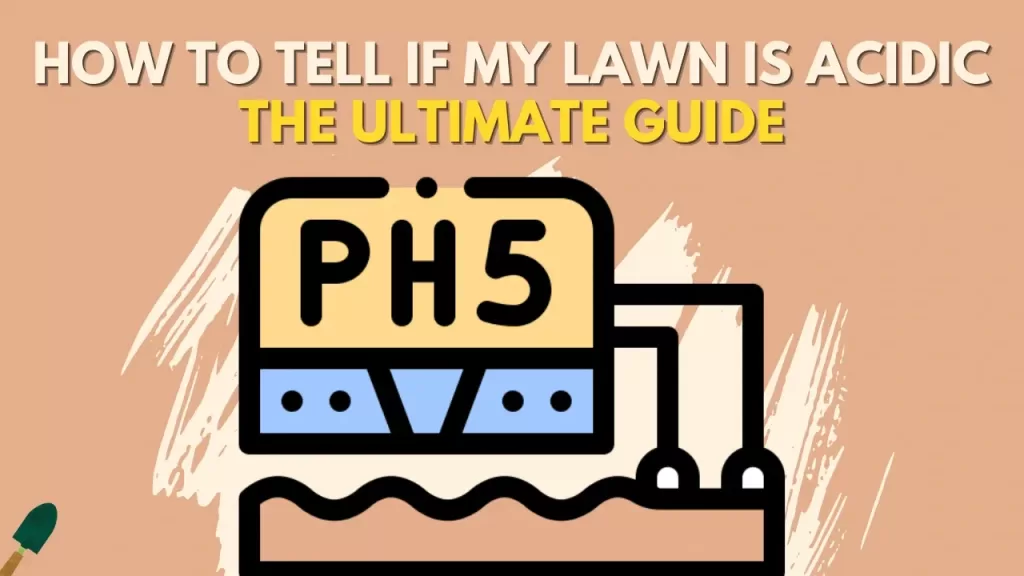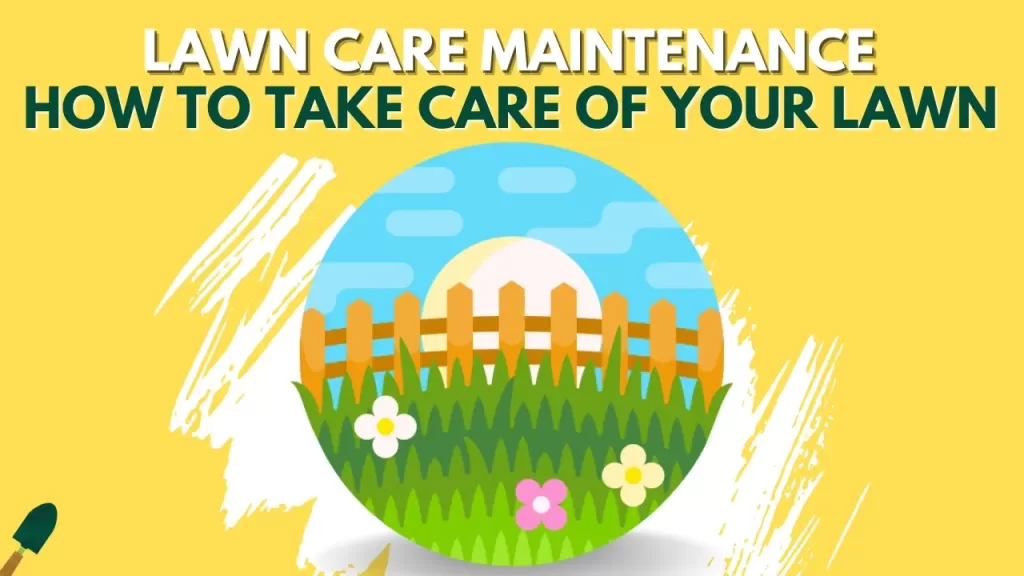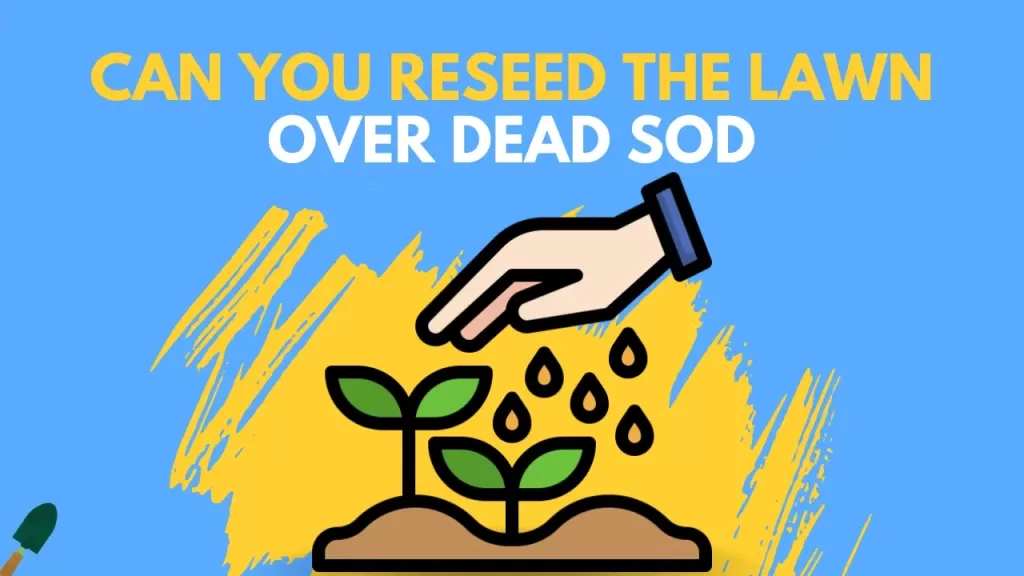Sometimes the problem of the lawn can be very different from the basics of watering, fertilizing, or mowing. It can be something residing on your lawn.
Thatch grass is a layer of densely packed waste materials, like dead stems, grass leaves, and roots which sit on top of the soil. This layer of thatch grass accumulates after mowing or from dying grass that has not gotten removed.
So you know about thatch, but let’s talk about it in detail and how you can remove it from the lawn.
What is thatch?
If you dig up a patch of the lawn and pull it out you’ll see different layers of soil there and you will see the first layer made up of organic debris known as thatch. This organic debris is a mix of dead and living plant material. This layer builds up on top of the soil and at the base of grass plants where stems meet roots and soil.
These materials such as small grass clippings or mulched leaves break down quickly in healthy lawns but some materials take more time to decompose and when these materials build up in the lawn without decomposing it makes the thatch layer thick and unhealthy for the lawn.
But thatch is beneficial to the lawn if the layer is ½ inch or thinner. It acts as an organic mulch layer which helps conserve the soil moisture and keeps the soil temperature suitable for the lawn and thin layer doesn’t block any nutrients or water to get into the soil but if the layer goes thick then it can be a problem for the lawn.
Thick layers also make the grassroots grow in it instead of the soil and making the roots grow shallow and unhealthy and making it vulnerable to heat and drought and stress the lawn. Water can also pool up in the thatch layer and can attract fungicides in cooler temperatures or at night and attract other diseases as well.
Grass type can also be a factor in thatch build-up in the lawn as aggressive grasses need frequent mowing and can produce more thatch than less aggressive grasses. Kentucky Bluegrass and bermudagrass are some of the grasses which are aggressive and need frequent dethatching and tall fescue and perennial ryegrass don’t.
What causes thatch in the grass?
Thatch build-up occurs due to mainly 2 factors, one is that the microbes in the soil cannot break down the organic matter properly due to chemicals or salts. The other thing is the size of the leaves and stems as bigger grass leaves take time to decompose and can build up in the lawn. Excessive thatch is often caused by synthetic fertilizer and poor maintenance of the lawn.
Lawn Care Practices That Cause Thatch Buildup in Lawns
- Shallow or frequent watering
- Over-watering the lawn.
- Fertilizing the lawn with synthetic fertilizers or salt-based fertilizers which harms the soil and microbes living in it and slowing the decomposition process.
- Mowing the lawn infrequently and removing more than 1/3 of the blade of grass.
- The use of lawn herbicides and lawn fungicides can also damage microbial activities in the lawn.
- No aeration in the lawn and compacted soil.
Benefits of thatch grass on the lawn
- Mulching soil
- Retains water
- Cushioning soil
- Decreases compaction
- Protect grass from changes in temperature
- Withstand mower traffic
- Reduce weed germination
Problems of thatch grass in the lawn
- Attract pests
- Build fungus
- Trap roots
- Block nutrients
- Thin out the grass
- Make it weak
Dethatching
Dethatching is a process of mechanically removing the thatch layer that is too thick for the lawn. This allows air, water, and nutrients to reach the roots of the plant and soil properly. Dethatching your lawn also makes the drainage better and keeps your lawn from excess water. This will make your lawn healthy, lush, and beautiful
When to dethatch your lawn?
To decide whether it is time to dethatch your lawn or not, take a trowel or spade and dig up a small wedge of your lawn and check the layer of the soil. You will see the different layers of the soil and you will see a layer of thatch also.
The good amount of thatch in your lawn is 1/3rd inch. If the layer is thicker than 1 inch you would have seen the poor health of the soil and thin grass, then you should do dethatching of the lawn.
Just like any other major lawn repairs like planting a lawn or reseeding it, dethatching should be done when the lawn is in its peak growth period. Active grass growth helps boost recovery. Dethatch cool-season grasses such as Kentucky bluegrass, in late summer or fall and warm-season grasses such as Bermuda Grass or Zoysia grass in the spring. Don’t dethatch the lawn in the dormant period as it will make your lawn die and never come back again.
How do you get rid of lawn thatch?
If the layer of thatch in your lawn is thicker than 1.5 inches, you may dethatch your lawn to remove that layer from the top of the soil. If you have a thick layer then it can take longer for you to dethatch it. There are 3 ways you can dethatch your lawn:
- Manual Dethatching – Manual dethatching is done by rakes with curved blades to grab and pull up the layer of the thatch from the soil. Dethatching the lawn with a rake is good for small lawns with light layers.
- Scarifying – Scarifying your lawn is a process of dethatching your lawn with the help of a power rake for a dethatching machine that digs into the thatch at the soil level and pulls it up. It can remove a thick layer of thatch from the lawn. Scarifying is also easy because the machine does most of the work.
- Verticutting – Verticutting is a process of making vertical cuts in the thatch layer and pulling it up with the help of blades. Verticutting machines slice the thatch layer and make way for the nutrients and water to go into the soil. It doesn’t remove the layer wholly from the lawn but it makes the nutrients go deep into the soil and make the lawn healthy. It’s best for a thick layer of thatch as it will be difficult to remove the layer from the lawn. Here’s a full guide to verticutting your lawn.
Pros and cons of dethatching lawn
Pros
- Helps nutrient
- Reduces fungal diseases
- Protect from pest
- Allow the grassroots to grow deeper
- Helps new seeds to germinate
- Removes dead grass
- Make the lawn drought and heat resistance
Cons
- Dethatching stresses out the lawn as it will also pull out some grass with the layer of the thatch
- Dethatching take a lot of effort and time for a lawn owner
- Dethatching the lawn is an expensive process
What to do after dethatching?
After the dethatching process is complete, your lawn will look thin and unhealthy as some grass also comes out with thatch in the process. So you need to make your lawn thick again by overseeding it.
To overseed your lawn properly, choose the best seed for your lawn so that it will improve the lawn’s health as well as its sustainability after the dethatching process. After choosing the seed for your lawn, do a soil test and see how healthy the soil is and what it needs to have a thick and beautiful lawn.
Your lawn will need fertilization as well as some lime to reduce the acidity of the lawn, check for the pH level of the lawn and if it is below or above 6-7 then add lime to the soil as it will restore the pH level.
Aerate your lawn if the soil is compacted to loosen it up so that the roots can grow deep and easily establish themselves in the lawn. Aeration also keeps the lawn healthy and makes it drought and heat-resistant.
After all this now you can spread the seed on the lawn and water it lightly so that the seed doesn’t get washed away with the water. After a week, increase the amount of water and reduce the frequency to allow the grass to develop deeper roots in the soil.
What to do with thatch after dethatching?
The thatch that you get after dethatching should be removed from the lawn with the help of a rake. You can put this thatch in the compost bin as it is full of nutrients and can be put in the lawn again after the decomposition and will help the lawn by providing helpful nutrients and other beneficial things.
Thatch Preventative Practices
Mowing – Improper mowing can cause thatch build-up as if you cut longer leaves it will take time to decompose in the lawn compared to small leaves. Mow your lawn regularly and try to cut only ⅓ rd of the grass which will keep the extra leaves short and also keeps the grass healthy.
Fertilization – Fertilizing the lawn with fast-release fertilizer can build up thatch in your lawn as synthetic fertilizers contain salt in it which kills the beneficial microbes in the lawn and helps the thatch to decompose fast in the lawn. Use organic or slow-release fertilizer that does not contain salts in it and which doesn’t kill the essential microbes or better help it grow.
Watering – watering your lawn lightly and frequently makes the thatch moist all the time and makes the grass develop roots in the thatch layer which is a problem as the thatch layer can’t hold the water for a long period. Do deep and infrequent watering which makes the water go deep into the soil and when the thatch dries the grassroots grow into the soil to find water and make the grass drought resistant because of deep roots.
Pesticide – Just like fast-release fertilizer, pesticides can also damage the microbes in the soil and can affect the decomposition of the thatch which will make it build up in your lawn. Try to not use pesticides in your lawn or if necessary use organic methods.
Is it good to dethatch your lawn?
Yes, dethatching is good for your lawn but when your lawn needs it. Unnecessary dethatching is not good. When the thatch layer is very thick and blocks the nutrients from getting into the soil, dethatching will remove that layer from the top of the soil and make way for the nutrients to go to the soil and make the soil healthy, which is good for your lawn.
Is thatch just dead grass?
Thatch is not just dead grass but is an accumulation of different materials from the lawn like grass leaves, dead stems, roots, and dead grass which are all packed densely on top of the soil.
Is it better to dethatch or aerate?
Dethatching and aeration, both are important for lawns as both do different things. Dethatching is important to remove the thatch layer from the top of the soil and get nutrients into the soil. Aeration helps release the pressure from the compacted soil and makes it loose so the nutrients can easily go into the soil.
Should I dethatch my lawn every year?
You shouldn’t dethatch your lawn every year as usually it’s done every 2-3 years but dethatching depends on how thick the thatch layer is in your lawn as ⅓ inches of thatch is good for your lawn. Check the thickness every year and dethatch according to it.
What causes brown thatch in the grass?
The main cause of brown thatch in the grass is that when the thatch layer is more than 1 inch, the grass develops roots in the thatch layer, but the thatch cannot hold moisture for a long time and the grass dries out and dies which makes it brown.





